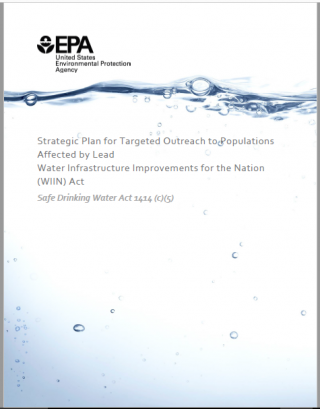Strategic Plan for Targeted Outreach to Populations Affected by Lead
Overview
The Water Infrastructure Improvements for the Nation (WIIN) Act made changes to the Notice to Persons Served (Section 1414 (c)) of the Safe Drinking Water Act (SDWA).
These include the requirement that EPA, with states and public water systems (PWS), notify and provide information to homes and communities once EPA receives drinking water data that indicates a household has drinking water levels above EPA’s lead action level (0.015 mg/L). These notifications are in addition to those currently required under the existing Lead and Copper Rule.
Strategic Plan
EPA has developed a final strategic plan that outlines the new WIIN requirements and identifies the roles and responsibilities for EPA, states, and PWS. The plan establishes procedures for ensuring that communities are provided with:
- An explanation of potential adverse effects on human health of drinking water that contains a high levels of lead;
- The steps that the public water system is taking to lower the concentration of lead; and
- The possible need for home owners to seek an another water source until the lead level can be lowered.
View the final Strategic Plan.
View question and answers from the webinars, and responses to comments.
Webinars
EPA hosted two webinars during the development of the Strategic Plan; one on March 23, 2017 and the other on May 3, 2017. View materials from those webinars below.
View Materials from the the May Webinar
View Materials from the the March Webinar
Comments and questions regarding the WIIN strategic plan? Please contact WIINStrategicPlan@epa.gov

